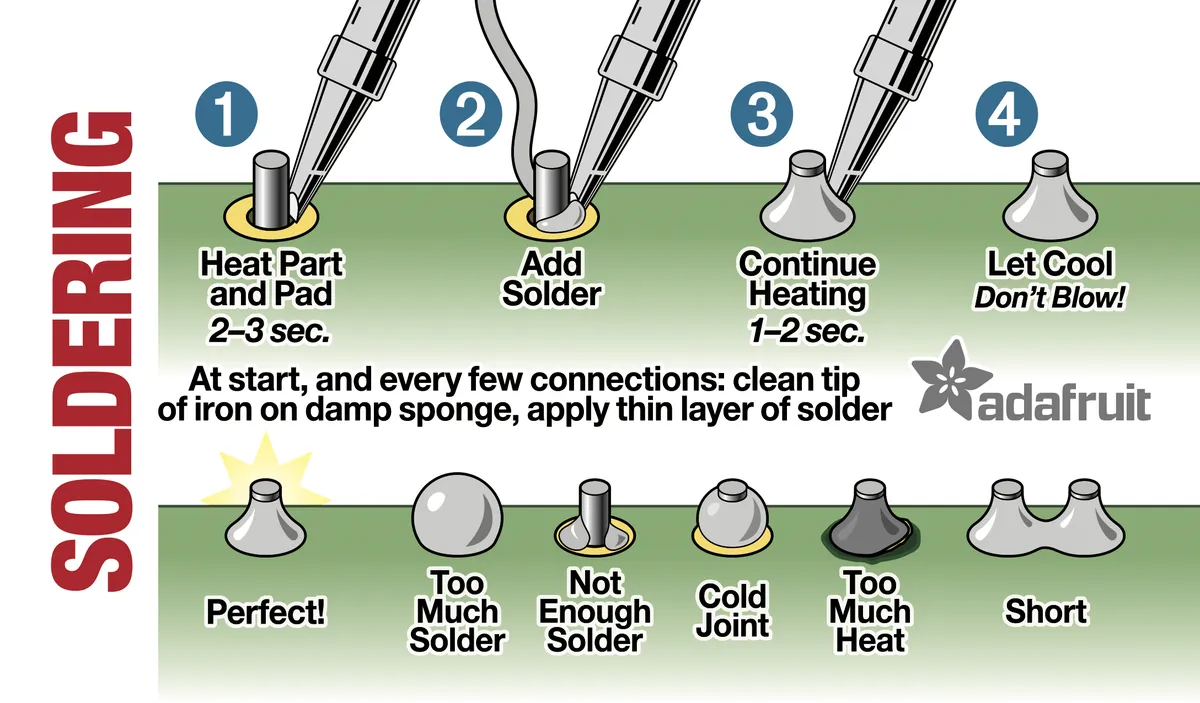Getting Started Soldering
About a month ago from the time I'm writing this, @ivan over on Polymaths.social was chatting with me about some vintage iMacs and I noticed he had one that he needed to learn how to solder to fix. I thought I'd quickly draft up a blog post with some soldering resources to help him out.
What iron to buy?
I personally use the Pinecil as my main soldering iron. For ~$40 on Amazon US, or $25 USD through their store, you get a pretty nice basic soldering iron that holds its temperature really well. Only added cost you need to get the iron going is a 60W USB-C power supply and the solder and you're ready to go.
If you want to drop a little more money for something higher class, I like the Hakko FX-888D. These used to be my go-to iron for soldering at work and it works like a champ, heats up quick, and lasts you years upon years. For my electrical engineering student peers, this is the soldering iron I recommend them because I think it'll last as they begin their careers as well. But the Pinecil mentioned above works perfectly for hobby use!
What parts do I need to get started?
Outside of the parts needed for the repair you're planning on attempting, or the parts for a kit you're planning on building, it would be nice to have the following ready at your station:
- (!) Soldering Iron w/ Stand
- (!) Solder (I like 60/40, but you can try out a few different mixtures and see what you like!)
- Flux
- Tip Tinner
- (!) Wet Sponge
- (!) Steel Wool (for cleaning off the iron tip)
- Solder Wick
- (!) Solder Sucker
These are my recommended parts if you want everything you might need on hand, but in all honesty the parts labeled with exclamation points are the only things you truly need at any given time to have a successful solder job.
Where do I learn?
A blog post probably isn't the way to learn the actual act of soldering - it is a very visual task and you need the visuals to learn as well. Because of that, here's some videos I like that should teach you the basics:
- Hot Soldering Tips by Ham Radio Crash Course
- Soldering 101 by Dave Casler KE0OG
- How to Solder properly by GreatScott!
Lastly, I really enjoy this graphic that gives you a good drawn indication of what a good solder joint looks like, vs. what you might need to improve on if your joint looks like any other representation on this image.
